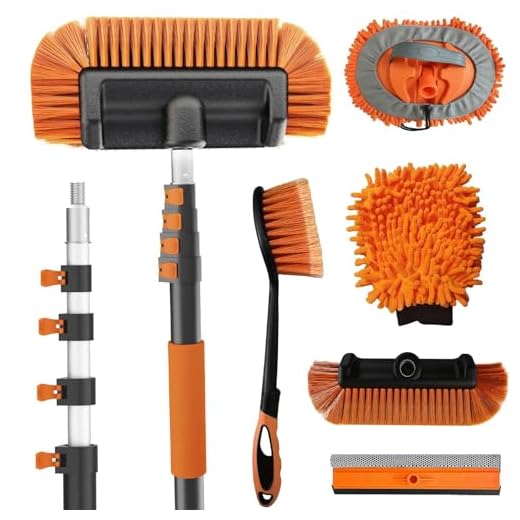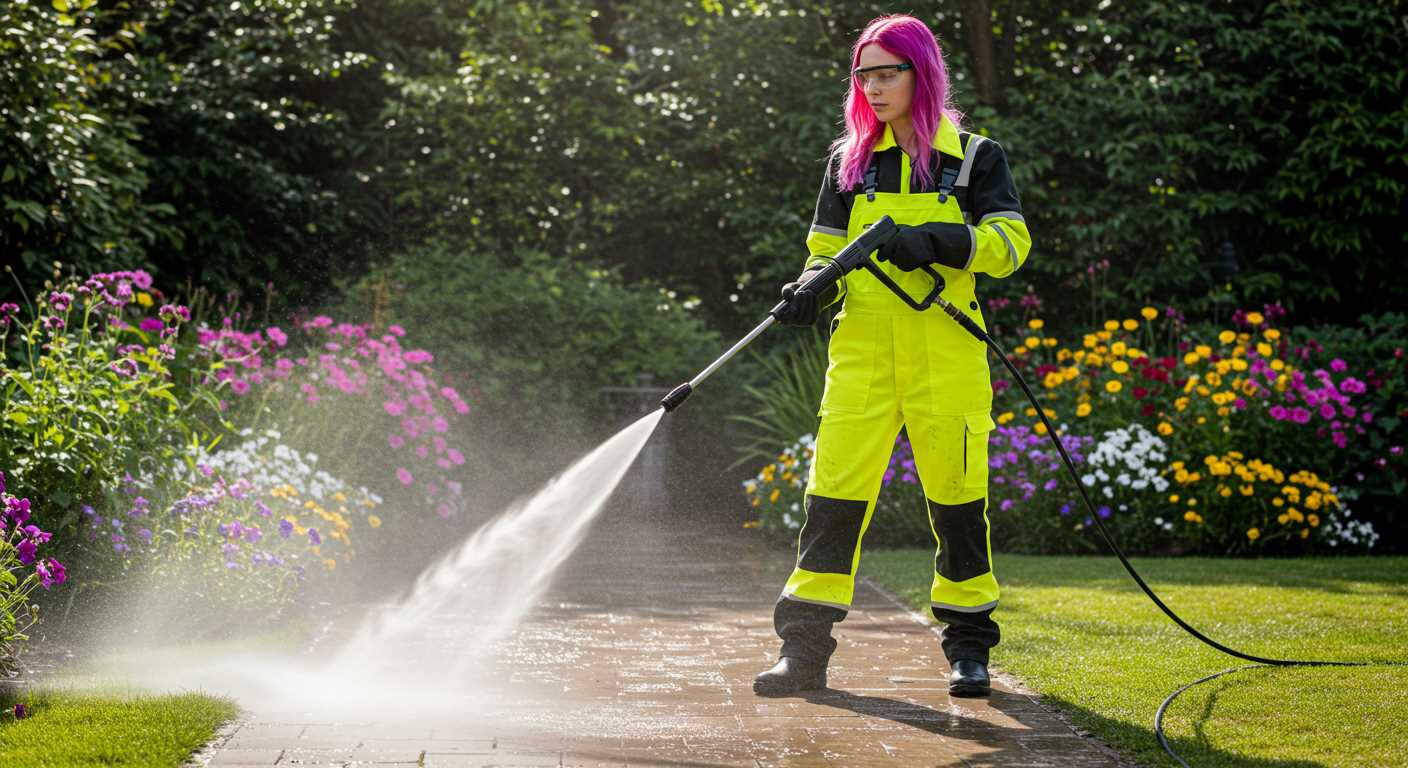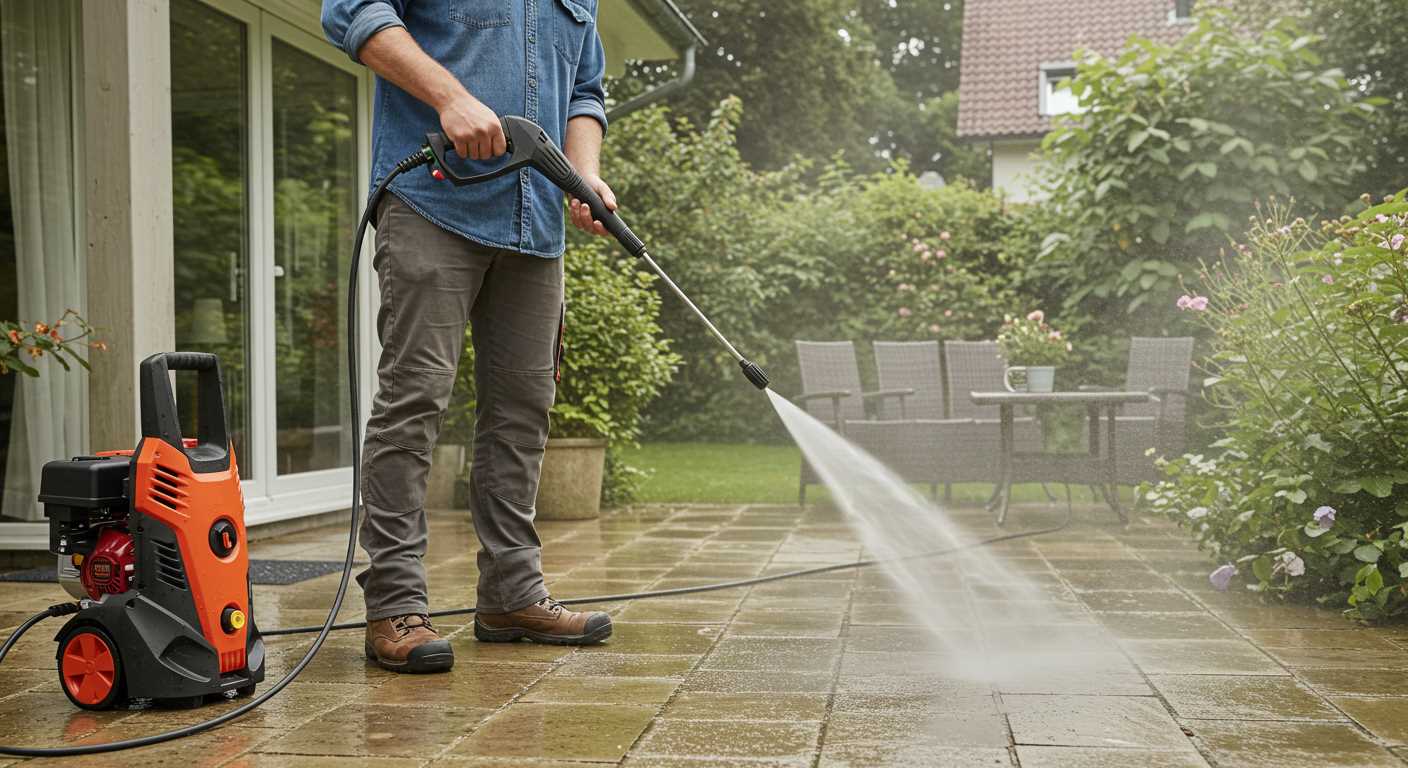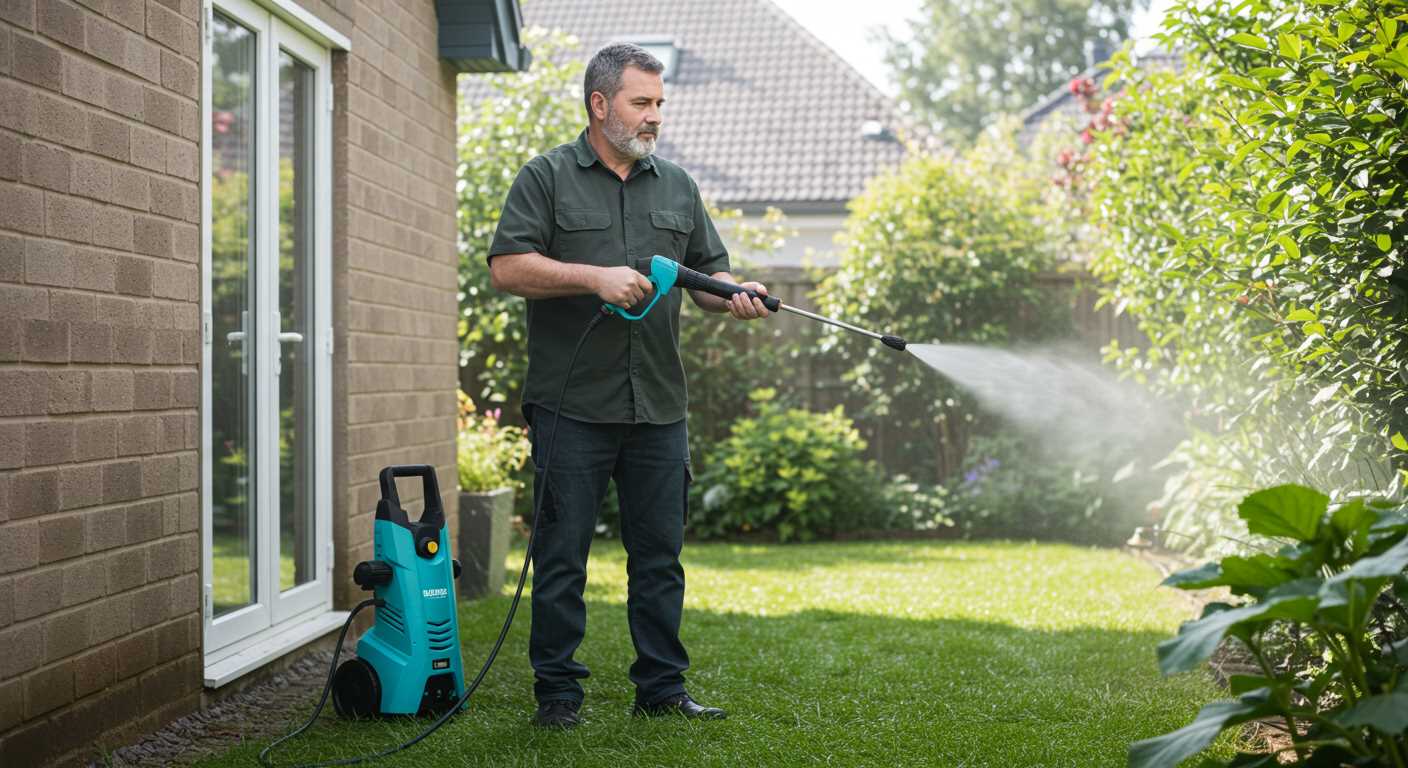



High-pressure cleaning tools can considerably uplift your vehicle’s appearance, but caution is paramount. A nozzle set to a high PSI (pounds per square inch) can propel water at such intensity that it risks stripping away protective coatings or even scratching the surface. A safe pressure range for automotive cleaning typically falls between 1200 and 1900 PSI. Exceeding this limit can result in unintended abrasions that undermine the vehicle’s finish.
When utilising these devices, it’s crucial to maintain a distance of at least two feet from the surface. This distance allows for an optimal wash effect while minimising the chance of harm. Stick to fan spray nozzles, which disperse the water more evenly, reducing the impact force on the exterior compared to a concentrated stream. Additionally, directing the spray at an angle rather than straight on helps lessen the risk of inflicting damage.
Avoid using hot water with these tools for vehicle cleaning–the heat can compromise wax protection and adhesives. Additionally, be mindful of any aftermarket modifications, decals, or unique paint jobs; these features may be more susceptible to harm than standard finishes. Always conduct a patch test on a less visible area before proceeding with full cleaning. This precaution can unveil possible compatibility issues and safeguard your vehicle’s exterior.
Can Pressure Washers Harm Your Vehicle’s Finish?

Using high-powered cleaning equipment on automotive surfaces is a practice fraught with potential issues. To maintain the integrity of your vehicle’s exterior, always consider the following aspects before proceeding.
Appropriate Nozzle Selection

Choosing the right nozzle is critical. Opt for a low-pressure option, typically recommended at 25 degrees or wider, to minimise stress on the surface. A narrow nozzle can concentrate water on a small area, increasing the likelihood of creating micro-abrasions.
Cleaning Technique
- Avoid directing the jet directly at the finish. Instead, maintain a distance of at least 2 feet to disperse the force adequately.
- Use a sweeping motion rather than holding the nozzle in one spot. This prevents prolonged exposure to concentrated pressure, which could be harmful.
- Begin from the top and work your way downwards. This technique helps debris flow downward, reducing the risk of scratching.
Monitoring the water temperature is also crucial. Using excessively hot water can weaken the ability of the protective coatings to adhere correctly.
Frequency of Use
Limit the frequency of use to avoid stripping away layers of protective wax or sealants. Regular hand washing is often more beneficial for maintaining the finish without risking wear.
Ultimately, proper technique and equipment settings are key to ensuring your vehicle’s exterior remains in pristine condition while utilising high-pressure cleaning equipment. Always prioritise safety and care for your vehicle’s surface.
Understanding Pressure Washer Settings for Car Care
For optimal results, select a nozzle with a wide spray pattern, typically 25 to 40 degrees, to avoid concentrated force on any one spot. This distribution is less abrasive and ideal for sensitive surfaces.
Adjust the working pressure to a range of 1300 to 1900 PSI. Staying within this threshold protects finishes from excessive force while still ensuring thorough dirt removal.
Incorporate a safe distance from the surface–maintaining at least 18 inches is advisable. Closer proximity can increase the risk of marring, particularly on lacquered or delicate surfaces.
Using a low-flow setting allows for controlled application of cleaning solutions while minimising water usage. This approach is not only environmentally friendly but also helps to manage runoff effectively.
Prior to commencing, thoroughly rinse the vehicle to eliminate loose dirt. This initial step reduces the potential of scratching when using the equipment.
Always start at the top and work downwards. This technique prevents soiling lower sections with drips from above, ensuring a more consistent finish.
Enhance your maintenance routine by incorporating suitable cleaning agents designed for automotive use. Many modern mixtures are compatible with cleaning devices and enhance efficacy without harming surfaces.
Finally, consistently inspect and maintain your equipment. Regular checks on hoses, connections, and nozzles ensure proper functionality and longevity, ultimately safeguarding your investment in both tools and vehicle aesthetics.
Ideal Distance to Maintain from Vehicle Surface

To ensure safe cleaning without harming the surface finish, maintain a distance of at least 45 to 60 centimetres from the vehicle. This distance helps optimise the force applied without risking any adverse effects on the exterior.
Adjusting the distance affects the intensity of the stream. Closer proximity increases threat, while extended space reduces it. If unsure, start at a greater distance and gradually move closer while observing the results.
Different models have varying output strengths, so check the specifications of your unit. For those with adjustable settings, a broader spray angle can also mitigate risks while cleaning.
Always remember to aim at a slight angle instead of directly perpendicular to the surface, assisting in better cleaning while decreasing the likelihood of harm.
Choosing the Right Nozzle for Car Washing
Select a nozzle with a wide fan spray pattern, such as the 25-degree or 40-degree option, to minimise the risk of harming the vehicle’s finish. These nozzles disperse water over a larger area, reducing the intensity of the stream and allowing for gentle cleaning.
Apart from fan pattern nozzles, consider adjustable ones. These allow you to control the spray intensity, adapting to different sections of the vehicle. For more delicate areas, such as window glass or plastic trims, a lower pressure setting will help avoid complications.
Always avoid zero-degree nozzles; their concentrated spray can strip wax or scratch the surface easily. Ensure you’re aware of the model’s specifications – some deliver water at pressures that could compromise finishes, even with the correct nozzle.
Your personal observation matters as much as the equipment. Before commencing, test the chosen nozzle on a less visible spot to ensure it doesn’t adversely affect the surface. This practice is especially important for custom finishes or older vehicles, where the paintwork may be more vulnerable.
Finally, keep the nozzle clean. Any debris can impact how the water sprays and may result in unintended outcomes. Regular maintenance helps maintain the intended performance and safety when cleaning your vehicle.
Common Mistakes That Lead to Paint Damage
Avoid using the wrong nozzle type. Using a narrow-angle tip can concentrate the force on one spot, resulting in chipping or marring of the finish.
Choosing excessive pressure settings is another error. High settings are unnecessary for gentle cleaning and can strip away clear coatings or harm the underlying surface.
Getting too close to the surface is a frequent oversight. Maintaining a distance of at least 24 inches is vital to prevent abrasive effects.
Neglecting to pre-rinse before treatment can lead to scratch-inducing particles being forced into the clear coat. Always start with a rinse to remove loose debris.
Ignoring temperature considerations can affect results. Washing in direct sunlight may cause cleaning agents to dry too quickly, leading to streaks and residue.
Failing to use a proper cleaning solution can impact effectiveness. Non-specific household cleaners may contain harsh chemicals that can harm automotive finishes.
Finally, skipping the drying phase after cleaning is a common misstep. Water spots can form if droplets remain on the surface, leading to unsightly marks.
Identifying Vulnerable Areas on Your Vehicle
Start by examining high-impact zones that are susceptible to chips and scratches. Focus on areas like the front bumper, grille, and leading edges of the hood. These spots experience direct contact with debris and road grime, making them more prone to unintentional marking.
Detailed Inspection Points

Next, consider the side panels and door edges. These are easily scratched when opening doors in tight spaces or from contact with nearby objects. Pay close attention to the lower parts of the panels, as they often collect road salt and grime that can erode the finish over time.
| Area | Vulnerability | Protective Measures |
|---|---|---|
| Front Bumper | High impact from debris | Consider adding a clear bra or protective film |
| Hood Edge | Chips from flying objects | Regularly inspect and apply sealant |
| Side Panels | Scratches from keying or contact | Use door edge guards |
| Wheel Wells | Corrosion from grit and salt | Consider undercoating treatment |
Additionally, special attention should be given to the rear bumper area, particularly for vehicles used frequently for loading and unloading items. The risk of abrasions is heightened here.
Strategies for Protection
It’s wise to apply a high-quality wax or sealant to provide an extra layer of safeguarding against the elements. Regular washings with a gentle approach will assist in maintaining the exterior finish, reducing the likelihood of unintentional marks or scratches.
Recommended Cleaning Solutions for Pressure Washing
For optimal results while using a high-pressure cleaning device, I suggest utilising a pH-neutral shampoo specifically designed for automotive surfaces. These solutions effectively break down grime without stripping protective layers or causing any harm. Always check the label for compatibility with various exterior finishes.
An eco-friendly concentrate is another excellent option. These products are biodegradable and safe for the environment, ensuring a smooth clean without leaving harmful residues. Dilute as per the guidelines to achieve the best balance between strength and gentleness.
In cases where stubborn contaminants like tar or tree sap are present, a dedicated adhesive remover can be effective. Apply it cautiously, targeting only the affected area, and rinse thoroughly following the application to maintain the integrity of the finish.
For regular maintenance, a safe all-purpose cleaner can be diluted in water to provide a light clean without the need for excessive force. This method is ideal for routine upkeep, ensuring your vehicle remains in top condition.
Lastly, consider surface sealants or wax following cleaning to add a protective layer. These products can enhance shine while providing additional defence against dirt and environmental pollutants. Always ensure the surface is completely dry before application for maximum adherence and effectiveness.
Signs of Paint Damage After Using a Pressure Washer
Look for dull spots on the finish which indicate that the clear coat has been compromised. These areas often appear less glossy and can be detected after cleaning. Inspect the surface for swirl marks; such patterns suggest that abrasive debris may have been propelled against the vehicle, stripping away layers of protection.
Another clear sign involves fading. If sections of the finish seem lighter or more weathered than others, it could indicate that the high-velocity stream has removed protective coatings. Pay attention to peeling or flaking areas, especially around seams and edges where the paint adheres less securely.
Surface Texture Changes
Run your fingers across the surface. If you feel rough patches, this may point to particles that have ingrained themselves into the finish or that the surface has been etched. Look for chipping as well; if small pieces of the coating are missing, this is a serious concern. Discolouration might also manifest, often seen as spots or streaks that weren’t there before washing.
Specific Vulnerable Areas
Inspect areas around emblems, mouldings, and the edges of the bonnet and doors. These spots are more susceptible to damage due to their varying surface contours. Any bubbling under the surface can signify that moisture has penetrated beneath the layers of the finish. Regular checks can help catch these issues early, preserving the aesthetic of your vehicle.
Best Practices for Safe Pressure Washing Your Vehicle
Avoid direct application of high-force streams; instead, utilise wider fan patterns to minimise risk to the finish.
Always begin by rinsing the exterior to remove loose grime and particles. This helps prevent scratching during the deep-cleaning phase.
When selecting a cleaning agent, choose pH-balanced solutions designed specifically for automotive surfaces. Never use harsh detergents or household cleaners, as they can harm the coating.
Prior to starting the cleaning session, inspect the vehicle for any existing blemishes. Address these areas carefully to avoid exacerbating them during the cleaning process.
Maintain a consistent distance of at least 2 to 3 feet from the vehicle while spraying. This distance helps to decrease the intensity of the water jets and protects delicate components.
Use a low-pressure setting initially. Once the surface is clear of debris, you can gradually adjust the pressure as needed for tougher stains or dirt build-up.
Focus on one section at a time; this method guarantees thorough cleaning without overwhelming the surface.
Rinse the vehicle thoroughly after applying any cleaning solutions. Residues left behind can lead to discolouration or damage over time.
Post-cleaning, dry your vehicle with a soft, lint-free microfiber towel. This step prevents water spots and helps maintain the shine.
Regularly remove any contaminants that accumulate on the surface to preserve the finish and protect against wear.
By adhering to these guidelines, you enhance both the appearance and longevity of your vehicle’s surface, ensuring it remains in top condition for years to come.









